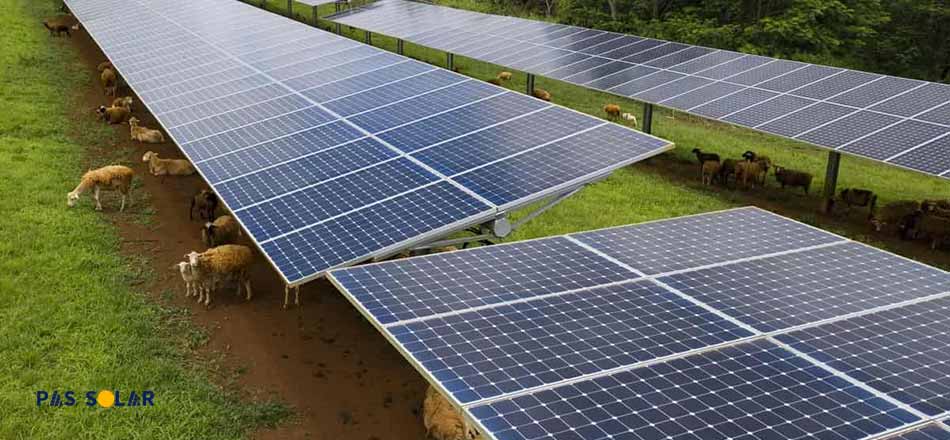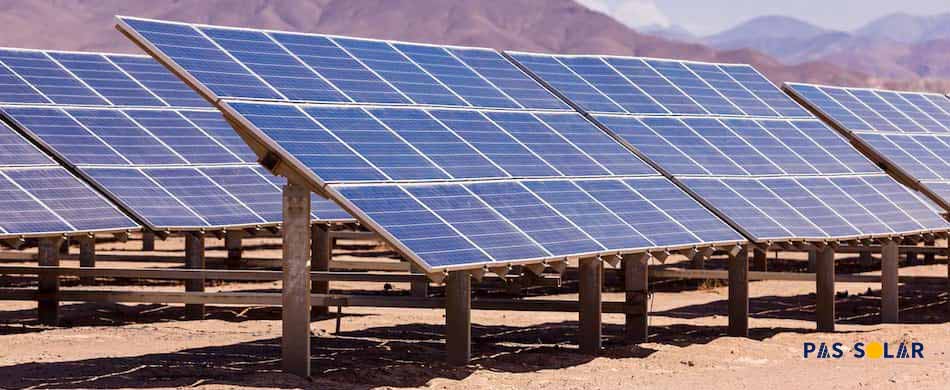A solar array is a collection of interconnected solar panels that are used to convert the sun’s energy into electricity. By installing a solar array, individuals and businesses can harness the power of the sun and generate clean, renewable energy for their homes and facilities. Solar arrays can range in size from small, rooftop installations to large-scale commercial arrays covering multiple acres of land. They are an effective and sustainable solution for reducing energy costs and reducing dependence on traditional fossil fuels.
Solar Array VS Solar Panel
The terms “solar panel” and “solar array” are often used interchangeably, but they refer to different components of a solar panel in UAE. A solar panel is a single unit that converts the sun’s energy into electricity. Solar panels use photovoltaic cells to convert light into direct current (DC) electricity, which is then converted into alternating current (AC) electricity to power homes and businesses. On the other hand, a solar array refers to a collection of multiple solar panels that are wired together to increase the total energy output of the system.
The uses of solar array are different from the solar panel uses, but they are not limited to just residential homes and businesses, but can also be used for larger scale commercial, industrial and utility applications to generate large amounts of renewable energy.
Applications of solar array
Solar arrays have a wide range of applications, from powering homes and businesses to large-scale utility projects. Solar array applications can be used for both on-grid and off-grid systems, providing reliable, clean energy for both residential and commercial use. The solar array sizes can range from small, rooftop installations to large-scale arrays covering multiple acres of land.
Solar arrays can be customized to meet specific energy needs, and the size of the array can be adjusted accordingly. Additionally, solar arrays can be easily scaled up or down as energy demands change over time. As the demand for renewable energy continues to grow, the solar array application is becoming increasingly popular as a cost-effective and sustainable solution for generating electricity.
How much do solar arrays cost?
The cost of a solar array can vary greatly depending on the size and type of the system, as well as the location and specific energy needs. On average, a solar array for a typical residential home can cost anywhere from $10,000 to $40,000 at an average solar shop in middle east, while larger commercial systems can cost hundreds of thousands of dollars.
However, the cost of a solar array has been decreasing in recent years due to advancements in technology and increased competition in the industry. The federal government also offers tax credits and other incentives to encourage the use of solar energy, which can significantly reduce the upfront cost of a solar array.
Despite the initial cost, a solar array can provide significant long-term savings on energy costs and provide a return on investment within a few years, making it a valuable investment for homes and businesses alike. With the increasing demand for renewable energy, the applications of solar array are expected to continue to grow, leading to further cost reductions and increased accessibility for homeowners and businesses alike.
Benefits of Installing a Solar Array
Installing a solar array offers numerous benefits to homes and businesses alike. The most obvious advantage is the cost savings on energy bills. Solar arrays generate clean, renewable energy from the sun, reducing or even eliminating the need for traditional energy sources. This can result in significant savings on energy bills over time, making it a smart financial investment.
Solar arrays also increase energy independence, reducing reliance on traditional energy sources that are subject to price fluctuations and supply disruptions. Furthermore, a solar array reduces the carbon footprint and helps to combat climate change by reducing the use of fossil fuels. Compared to traditional solar panels like the Longi solar panels UAE, a solar array is often more efficient, generating more energy and requiring less space.
It’s important to note that while the terms “solar array” and “solar panel” are often used interchangeably, a solar array refers to a collection of interconnected solar panels that work together to generate energy. Installing a solar array is an investment in a sustainable future and a commitment to reducing the impact on the environment.
Types of Solar Arrays
There are several types of solar arrays to choose from, each with its own unique set of benefits and uses. The most common type is the photovoltaic (PV) array, which uses photovoltaic cells to convert light into electricity. There are also thin-film arrays, which use a thin layer of photovoltaic material to generate electricity and concentrating photovoltaic arrays, which use lenses or mirrors to concentrate light onto a small area of photovoltaic material.
The uses of a solar array can range from residential homes and businesses to large-scale commercial and utility projects, and the type of array chosen will depend on the specific energy needs and requirements. Other factors to consider when choosing a type of solar array include cost, efficiency, and durability, as well as local regulations and incentives. Regardless of the type chosen, a solar array is a cost-effective and sustainable solution for generating clean, renewable energy.





